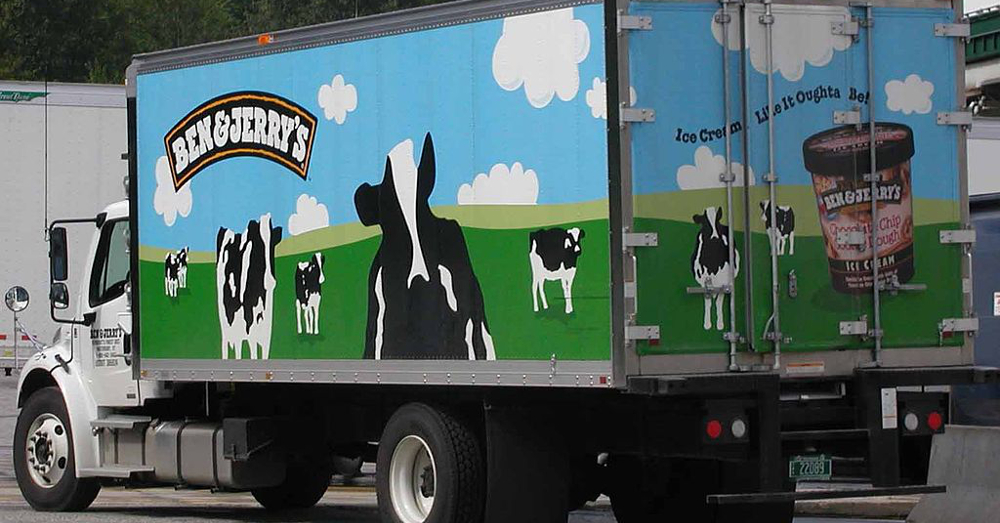
Will Allen: Time’s Up on the Ben & Jerry’s Charade
You can’t blame Ben & Jerry’s for feeling surrounded – it is. After years of letting its marketing outpace its reality, its claims of “social responsibility” are ringing hollow, especially when it comes to its foundational product: milk. While the spotlight shines brighter on the economic, environmental and animal welfare calamities of Vermont’s industrial dairy industry, Ben & Jerry’s has been having it both ways: ignoring the farm injustice and pollution while reaping the economic benefits of the cheap milk.
July 12, 2017 | Source: VT Digger | by Will Allen
You can’t blame Ben & Jerry’s for feeling surrounded – it is. After years of letting its marketing outpace its reality, its claims of “social responsibility” are ringing hollow, especially when it comes to its foundational product: milk. While the spotlight shines brighter on the economic, environmental and animal welfare calamities of Vermont’s industrial dairy industry, Ben & Jerry’s has been having it both ways: ignoring the farm injustice and pollution while reaping the economic benefits of the cheap milk. Consider this, while dairy farmers are paid less than it costs them to produce their milk and Vermont taxpayers are being asked to pony up a couple billion dollars to clean up the waterways befouled by the mega-dairies, Ben & Jerry’s is aiming to be a billion-dollar-a-year corporation by 2020, growing by more than $100 million a year.
That’s the kind of corporate extraction and malfeasance that has got people’s attention, thus making Ben & Jerry’s a target for a broad coalition of activists, everything from migrant justice groups to water-quality stewards to animal rights groups to rural/economic justice advocates to food safety groups. Even the climate-change movement is taking aim at what has been the largely ignored elephant in the room when it comes to climate-based discussions or initiatives: industrial agriculture, particularly the commodity-based dairy industry that Ben & Jerry’s so lucratively exploits.
Our latest round of engagements with Ben & Jerry’s began in 2014, during the legislative struggle to pass a GMO (genetically modified organism) labeling bill in Vermont. We’d been hearing testimony from dairy lobbyists claiming that herbicide and fertilizer use had declined since GMO corn had become dominant in Vermont. We were skeptical and, after acquiring and analyzing the Agency of Agriculture’s own data, found the exact opposite to be true: herbicide use had increased by 39 percent and nitrogen fertilizer use had increased by 17 percent. We also found that the two dominant herbicides that had the largest increase in use, metolachlor and atrazine, are carcinogens, cause birth defects, are endocrine disruptors, and pollute drinking water, and other public waters. So, the most toxic herbicides actually increased, not decreased, as the lobbyists claimed.
